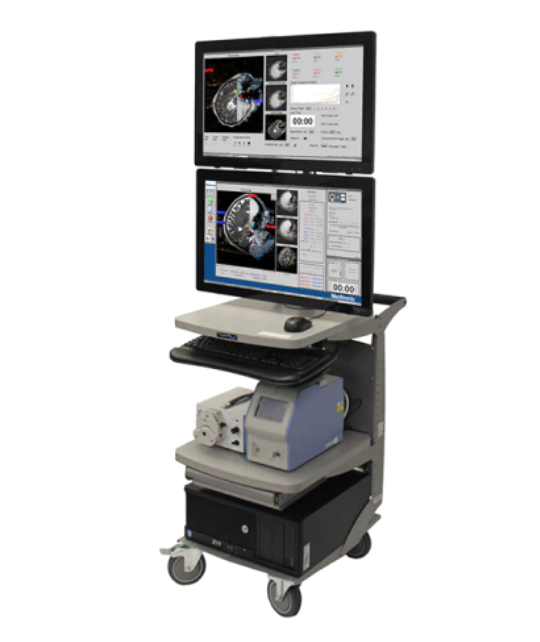Neurosurgery Team Performs Groundbreaking Laser Hemispherectomy on Epileptic Child
 For only the second time in the world, neurosurgeons at the University of Chicago Medicine Comer Children’s Hospital and the Department of Neurosurgery used a minimally invasive surgery to disconnect the right and left sides of the brain and the left epilepsy-generating zones of a boy with epilepsy, stopping his seizures. The 8-hour laser functional hemispherectomy surgery was performed by Peter Warnke, MD, on 11-year-old Zachary Kurek, who suffered a stroke at birth, causing him to lose most of the function of the left side of his brain. His epilepsy was getting worse as he got older, causing dozens of seizures a day that medication couldn’t control. He also had very limited function in his left cerebral hemisphere as a result of the stroke.
For only the second time in the world, neurosurgeons at the University of Chicago Medicine Comer Children’s Hospital and the Department of Neurosurgery used a minimally invasive surgery to disconnect the right and left sides of the brain and the left epilepsy-generating zones of a boy with epilepsy, stopping his seizures. The 8-hour laser functional hemispherectomy surgery was performed by Peter Warnke, MD, on 11-year-old Zachary Kurek, who suffered a stroke at birth, causing him to lose most of the function of the left side of his brain. His epilepsy was getting worse as he got older, causing dozens of seizures a day that medication couldn’t control. He also had very limited function in his left cerebral hemisphere as a result of the stroke.
Dr. Warnke and his team studied the case and determined that they could completely disconnect the right and left sides of his brain, and separate any epileptogenic tissue in the left hemisphere, without worsening his verbal or physical functioning.
That way, if seizure activity occurred in the left side of his brain, it would be unable to send signals to the right side of the brain or to the fibers that transmit seizure activity, and Zachary’s body wouldn’t react. The neurosurgery team used sophisticated imaging of his brain’s fiber connections that would need to be disconnected by lasers.
But to completely disconnect a whole hemisphere with implanted laser fibers was a new challenge. Rather than remove a portion of the skull to access the brain, as traditionally done in a procedure called a callosotomy, Warnke and his team drew on their previous research, which they were first to publish, suggesting that interstitial lasers could be used to disconnect the two hemispheres of the brain.
“If we could replace open surgery with this, that would be a major breakthrough,” said Warnke, UChicago Medicine’s Director of Stereotactic and Functional Neurosurgery. “We’ve entered uncharted territory, but added a new level of safety as the surgery is carried out in the MRI scanner. It provides continuous vision and real-time monitoring of the brain temperature and imaging of the cell damage produced.”
Not only have the seizures stopped, but his whole attitude has changed. He’s optimistic and happy now.
Since the surgery, Zachary hasn’t had a single seizure, his parents said. Warnke described his progress as “remarkable.”
Warnke performed the surgery using an MRI-guided Visualase laser ablation system (Medtronic). Five small holes about the size of coffee stirrers were drilled into Zachary’s head and catheters were inserted. Five laser fibers were inserted into those catheters and moved deep into Zachary’s brain. Constant guidance from an MRI, providing the exact location and temperature of the laser fibers every seven seconds, allowed Warnke to use the laser’s heated tip to ablate and seal off the connections between the two brain hemispheres.
In the future, laser epilepsy surgery at Comer Children’s will be done using a new state-of-the- art robot purchased in March 2021. The robot will be able to insert the laser fibers in the brain with greater speed and precision, shortening the surgery time.
Citation
Neurosurgery Team Performs Groundbreaking Laser Hemispherectomy on Epileptic Child. Appl Radiol.
July 2, 2021